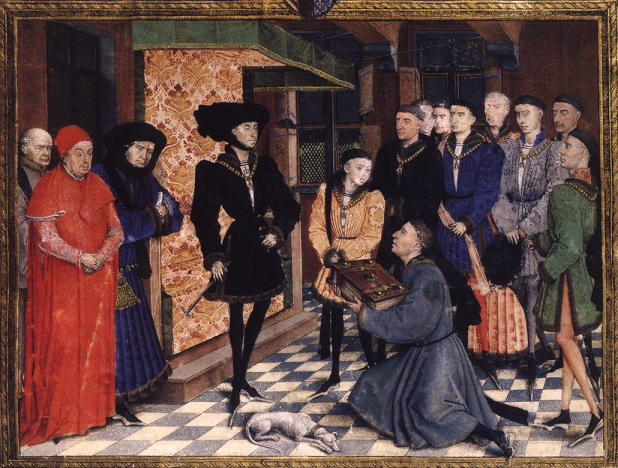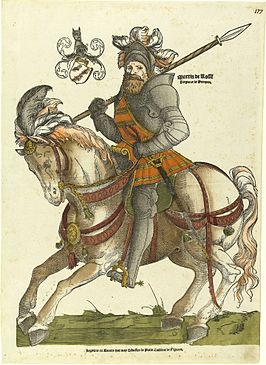State of the Northern Netherlands at the eve of the Frisian Wars
Though she had been the centre of politics north of the Rhine since her formation, Holland and her sister province Zeeland saw themselves achieve dominance after the peace at Reims. The capture of ‘s Hertogenbosch and Breda increased the already large influence Holland held over the Rhine, demonstrating her desire to further her interests across the Low Countries to the other Dutch states. What was the most worrying to the Dutch states however, was the political union between Holland and Zeeland. Whereas in previous decades Holland had been unable to exert her influence over the rest of the Netherlands due to political instability, take the Hoek and Kabeljauw wars, the strong leadership of van Hagen and the process of centralization the country had undergone during and after the war enabled ‘s Gravenhage to focus her attention outwards. It is therefore of importance to note the response and situation of the Dutch states after the Revolt.
Prince-Bishopric of Utrecht
As the state sharing the largest land border with Holland, the Prince-Bishopric of Utrecht, also known as the Sticht, had plenty stimuli to start worrying about his upstart neighbours. Before the rise of Holland as the economical, and therefore political powerhouse of the Netherlands, the Bishops of Utrecht had occupied that position. In fact, Utrecht was still the most populous city north of the great rivers, and not only did the Bishopric possess the city’s surrounding areas, the so called Nedersticht, she also held lands near the mouth of the IJssel river, the Oversticht area. Her religious authority extended even further
Despite her territorial size, Utrecht suffered from political instability and an unfortunate geographical position. It goes without saying that the Sticht was governed by a religious head, who gained his position from a college of supposedly neutral clergymen, and needed approval from the Papacy. In reality, this system worked far from ideal. The electoral college was strongly influenced by neighbouring feudal lords, like the counts of Holland and the Dukes of Gelre, but also by secular nobles from within the Bishopric, all of whom had something to gain from a weakened Utrecht. To add to that, Utrechts two parts were separated from one another by the hostile Duchy of Gelre. Authority over Oversticht was dubious and contested, almost non-existent near the Frisian border.
Prince-Bishop Gijsbrecht I was slow to react, but reacted nonetheless. Shortly after Dutch troops marched into ‘s-Hertogenbosch and thereby isolated the Sticht from the southern Low Countries, plans for a new fortress in the centre of Utrecht were drawn up. The fortress, aptly named Vredenburgh, was meant to prevent raids or excursions from both the states Holland and the Duke of Gelre, but also to preserve inner stability. It was the most advanced defensive structure in the Netherlands at its completion in 1457.
The state recognised however, that even the Vredenburgh would not be able to hold out against a determined attack from Gelre, but especially Holland. She needed allies, which she found in the Lega Genovese, a trade league lead by the rich Italian city-state Genoa, but by then had its members located almost exclusively in the Holy Roman Empire. By signing off trading privileges along the IJssel river with cities like Deventer and Kampen, the Prince-Bishop managed to squeeze his theocratic state into a mercantile organization such as the Lega.
The Duchy of Gelre
Further east, at the border of Germany, lay the Duchy of Gelre, which had been the staunched opposition of both Holland and Utrecht. Simultaneously, she was mingling in the affairs of German states such as Cleves and occasionally took sides in Frisian politics. Compared to the political instability of Sticht, and the lack of authoritarianism in Holland or Friesland, Gelre could be viewed as the only true feudal state north of the Rhine. The current duke, Jan van Egmont, had, at multiple occasions, stated his desire to form a Low-Saxon state, comprising of Gelre, Oversticht and the Frisian lands. His policy proved to be overwhelmingly anti-Hollander, obstructing trade along the IJssel and on the Zuiderzee.
Ever since her foundation, Gelre had been split into four regions, the so called “quarters”. These were, in increasing order of population; the Quarter of Nijmegen, the Quarter of Arnhem, the Quarter of Roermond, and the Quarter of Zutphen. The quarters of Zutphen and Arnhem were both situated north of the great rivers, whilst Nijmegen was situated in between and Roermond completely south of them. Roermond was therefore often referred to as Upper-Gelre, whilst the other three Quarters were very rarely called Lower-Gelre to contrast them with Roermond.
Gerlrian troops after the army reforms during the 1450's and 1460's
One of the benefits that come with being a strong, centralized state in the middle of an uncentralized Netherlands, is the advantage of a strong military force. Following the Burgundian model, Gelre had started to field a standing army, which was unprecedented amongst her peers. Her army depended on a fluent coorperation between her four quarters, each of whom were obligated to deliver a number of troops relative to their population; the bulk of the Gelrian forces came from Nijmegen and the areas along the Rhine and Meuse, whilst the quarter of Zutphen mustered only a small fraction of the total amount of troops. Each of the 'armies' fielded by these quartes could be seen as an ordinance, but on a larger scale. At the head of this fairly modern army stood Johan van Isendoorne, who had a reputation as a northern condotierri captain; his words "Blazing and Burning are the jewels of warfare" would come to symbolize his career.
Much like the Bishop of Utrecht, Arnold van Egmont had noticed Dutch boots marching along the Rhine. This was especially worrying for Arnold, as his two regions were now separated from one another. Looking for ways to counter the Dutch aggression, he too joined the Lega Genovese, at the request of Bishop Gijsbrecht himself, but Arnold did not stop there. To prevent the balance of power tipping in favor of Holland, he formed a pact with Matthias von Habsburg, who was eager to accept for obvious reasons. In return for his armies and influence, he would have a strong ally with anti-Holland, and more importantly, anti-French sentiment, which he hoped could prevent the Northern Netherlands from falling into the hands of the Valois, and drift away from the Empire.
Friesland
Friesland was a peculiar region, even for the already peculiar Netherlands. As Holland was defined by its lack of feudalism in the usual sense, so was Friesland, only in the case of Friesland, there was no central authority at all. From the 13th century onwards, the Frisians had enjoyed the so called Fryske Frijheid, or Frisian freedom. Just like in Holland, multiple towns vied for influence over the region, yet none of them were able to do so successfully, with perhaps the exception of Groningen, who, in the power vacuum that remained after the Bishopric of Utrecht declined and Holland came under Burgundian rule, started to exert herself as the protector of the Frisian freedom.
The similarities with Holland go further than the lack of feudalism. Much like the Hoeken and Kabeljauwen in Holland, Friesland had been ravaged by conflict 30 years prior due to two factions competing for influence; the Schieringers and the Vetkopers. It is incredibly unclear what these two sides actually fought for, but the consensus is that the members of both factions only wished to further their own wealth and influence, instead of having a vision for Friesland. These conflicts did never really reside, but during the 1460’s Friesland went through a period of relative peace.
Over the course of the 15th century, the political landscape of Friesland became more and more characterised by the city of the Hanseatic city of Groningen. The city had bought Oosterwolde, along the mouth of the Eems, had taken direct control of the lands surrounding her, and exerted economic and military dominance over Friesland and the Ommelanden. In a brilliant turn of events, Groningen had subdued the twists between the Schieringers and Vetkopers by launching an offensive against the Bishopric of Munster, taking both the city and her surroundings by force. This sent a shockwave through Northern Germany, as no one, not even Groningen herself, had expected the war to be such a decisive victory for Friesland. The success of the campaign could be found in a man named Pier Gerlofs Donia, alias ‘Grutte Pier’, and his mercenary band ‘Arumer Zwarte Hoop’. Donia was said to be seven foot tall and wield a claymore the size of a full-grown man.
Pier Gerolfs Donia, leader of the 'Arumer Zwarte Hoop'






















